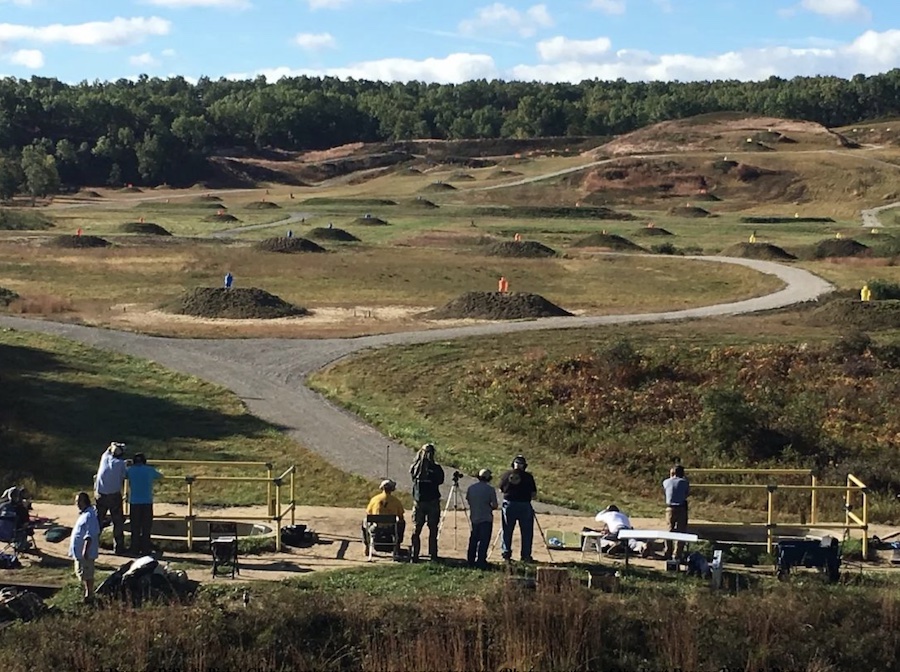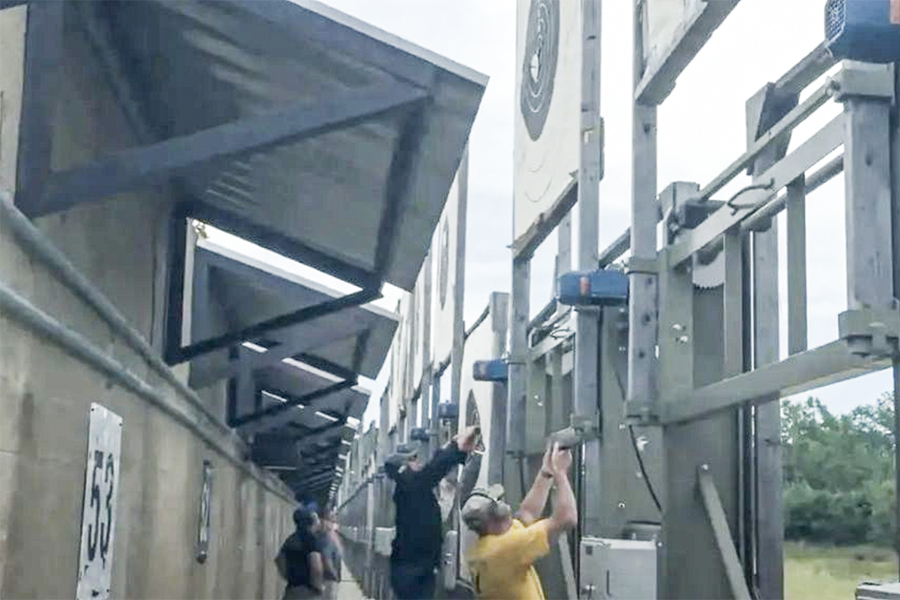
A small civilian gun club located just 50 miles northwest of Boston has won a “landmark” lawsuit against nearby Fort Devens for violating their rights and federal law by denying them access to military rifle ranges at reasonable rates. The Fort Devens Rifle & Pistol Club, Inc., filed suit in 2022 claiming that Fort officials were charging range fees in violation of federal law, according to club treasurer Jim Gettens, a retired attorney who assisted with the legal fight.
Gettens said Monday that his club’s victory was a major “David vs. Goliath” event.
“They were running an illegal profiteering racket,” he said. “That’s the best way to describe it. This was a landmark case.” Gettens and other club members noticed that their problems with the range began only three days after Joe Biden took office in 2022, which they said would never have happened under President Donald Trump’s administration.
At issue was a little-known section of U.S. code that requires the Army to make rifle and pistol ranges available for civilian use as long as it does not interfere with military training. The law prohibits officials from charging exorbitant fees for range access.
Another federal statute requires the Army to provide logistical support to the Civilian Marksmanship Program. The Fort Devens Rifle & Pistol Club, Inc. is an affiliate of both the Civilian Marksmanship Program and the National Rifle Association.
For decades prior to the 2020 election, club members had been using a wide array of rifle and pistol ranges at Fort Devens free of charge. Club members supplied their own targets, ammunition, range safety officers and other supplies. They even policed their own brass. Most of the club members are veterans so they’re intimately familiar with range safety protocols and other best practices. To be clear, in terms of taxpayer dollars, the club cost the Fort very little, which is why club member were so surprised when the Fort began charging them.
Just days after the 2020 election, the club was notified in writing that they would have to start paying a minimum of $250 per range, and the fees would increase based on the total number of shooters.

The bottom line was that Fort Devens tried to charge personnel costs for range safety officers and technicians who were never there. In addition, a range staff member admitted in a memorandum that the range was unable to prove maintenance, supply, and repair costs because the Fort never kept any such records.
“The odds were certainly stacked against us,” Getten said Monday. “As it turned out, the U.S. Army garrison at Fort Devens croaked themselves with their own administrative records. A range officer filed a memo for the record admitting they kept no maintenance, supply, or repair records – one of the most egregious abuses. We detailed all of this stuff in a memorandum in support for summary judgement. We just destroyed them.”
While the gun club won and can stop paying the fraudulent fees, hundreds of civilian police officers are still charged for their time at the range, which Getten said is a legal problem for their agencies.
“Non-DoD law enforcement officers, state police and municipal police departments are still paying out the wazoo for all of those costs,” Getten said. “Non-DoD law enforcement agencies should not be getting hosed the way they are. Also, ICE, FBI, U.S. Customs and other federal law enforcement agencies pay out the wazoo for their range time and pass the costs onto taxpayers.”
Assistant U.S. Attorney Julian N. Canzoneri, who defended the government against the gun club’s lawsuit, did not return phone calls or emails seeking his comments for this story.
The Second Amendment Foundation’s Investigative Journalism Project wouldn’t be possible without you. Click here to make a tax deductible donation to support pro-gun stories like this.
This story is part of the Second Amendment Foundation’s Investigative Journalism Project and is published here with their permission.


“Assistant U.S. Attorney Julian N. Canzoneri, who defended the government against the gun club’s lawsuit, did not return phone calls or emails seeking his comments for this story. ”
Must be just another nutless wonder!
10 U.S. Code § 7409 – Rifle ranges: availability for use by members and civilians
“(a) Ranges Available.—
All rifle ranges constructed in whole or in part with funds provided by the United States may be used by members of the armed forces and by persons capable of bearing arms.
(b) Military Ranges.—
(1) In the case of a rifle range referred to in subsection (a) that is located on a military installation, the Secretary concerned may establish reasonable fees for the use by civilians of that rifle range to cover the material and supply costs incurred by the armed forces to make that rifle range available to civilians.”
We have a military range within easy driving distance, but its on a base. Its obviously “constructed in whole or in part with funds provided by the United States”. If you are a civilian they will flat out tell you “nope, can’t use our range.” but the base commander allows its use if you are a civilian and go there with a military member (as a guest) or are retired military or a military member defendant they will let you use their range free of charge, as long as its not in use for training, and you gotta call ahead and schedule.
Biden was sworn in in 2021, not 2022
well, considering Biden probably didn’t know what year it was most of the time …
Sounds like someone higher up the chain needs to have a word with the base CO at Fort Devens.
how life changes . when i was in high school back in the late 1950’s ,we had a rife club.
the dod supplied us with our 22 amo . the amo was free all we had to do was pay the cost of shipping .
i don’t remember what we paid per box of 22’s but it may have been a quarter . dod figured
all of us would end up in one of the services and having people that knew how to hit a target
before we arrived at basic training could not be all bad .